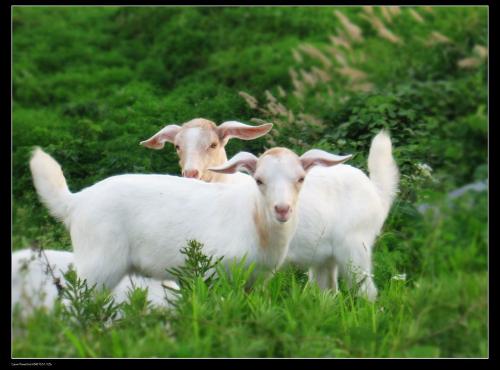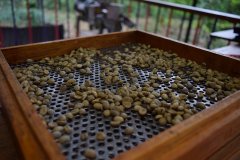How does Turkish coffee (Greek coffee) be made? how does the coffee flow into Turkey?
The 13th century was the era of the decline of the Arab Empire and the rise of the Ottoman Empire. When studying this period of history, later historians tend to focus on the growth and decline of the two empires, ignoring the significance of coffee fruit flowing into the Arab world and integrating into Arab culture. It turns out that this small coffee fruit is far more alive than empires that span three continents: while the Arab Empire and the Ottoman Empire have long been sealed as historical terms, coffee still flows in different styles of coffee pots with the barista's dancing fingers, with an indescribable fragrance.
The years flow gold, the small fire cooks slowly, cannot hide the tired guest to sniff. The intertwined journey of coffee and human beings is beginning in these numerous coffee pots.
In fact, Ethiopians began to drink "boiled coffee" before the coffee fruit was introduced into Yemen, but coffee as a drink did not become popular until it was introduced into the Arab world. The word "Coffee" in English comes from Arabic. But the popular road did go through a twist: Islam banned alcohol, and coffee also had a nerve-stimulating effect, so Islamic leaders initially banned believers from drinking coffee. until the Sultan of Egypt failed to resist the temptation of coffee and announced the lifting of the ban-interestingly, the same passage will be repeated in Pope Clemon VIII hundreds of years later.
In 1453, the Ottoman Empire captured Constantinople and moved its capital here, becoming the most powerful overlord at the junction of Asia and Europe for hundreds of years. As an Islamic country, the Ottoman Empire also banned alcohol and could not help coffee, so coffee became the most important social drink in more than 5 million square kilometers of the Ottoman Empire, and its status was similar to that of tea in the Chinese cultural circle. As a result, coffee originating in Ethiopia was deeply branded with Turkey, which gave birth to the oldest coffee pot: the Turkish coffee pot.
From the point of view of the style, it is also easy to understand the antiquity of the Turkish coffee pot: the body of the Turkish coffee pot is like a measuring cup, with a pouring nozzle protruding from the upper edge to facilitate the pouring of coffee; there is a long and straight handle on the outside of the pot which is 90 degrees from the spout. It is sometimes made into a wooden handle for insulation. The body of the pot is mostly brass, and ceramics are occasionally used-the Ottoman Empire is, after all, closer to the country of origin of ceramics than continental Europe.
This Turkish coffee pot is as simple as a medicine can. It seems hard to imagine that in the days when coffee first circulated in the Arab world, it was this simple and unfiltered apparatus that supported the entire coffee world. Based on such a simple coffee pot, Turkish coffee is equally straightforward: grind the beans and cook them directly in the pot, pour the water into the cup after three boils, and sip it along with the remaining coffee grounds. This kind of coffee will inevitably make people feel dry, but according to Turkish custom, drinking coffee immediately means that the host's coffee is not well brewed, which is not a small humiliation.
However, when it comes to the custom related to Turkish coffee, nothing is more famous than coffee divination, and this kind of coffee divination can only be done by Turkish coffee. Because there is no filtering process, after drinking Turkish coffee, there will be a lot of residue in the cup. At this time, figure out the question of divination, buckle the coffee cup upside down on the cup plate and open it carefully. The different shapes of coffee grounds on the cup plate represent the answer to the question. The full moon represents good luck, the half moon represents stability, the new moon represents caution, and the third moon represents bad luck. It is clear that full moons are the most likely to occur, and from this point of view, Turkish coffee always puts diviners in a good mood.
Coffee divination with strong Islamic characteristics is actually quite common in European culture, except for a different "face": Europeans use tea grounds instead of coffee grounds, which is tea divination (Tasseography). In the magic classic Harry Potter, tea residue divination is the subject of divination in the third-year course at Hogwarts School of Witchcraft and Wizardry. Harry Potter in the film occupies the image of a "big black dog", implying death-rest assured, there is no such ominous implication in the world of Turkish coffee.
Although the form of the Turkish coffee pot is simple, once it is associated with sculpture and painting, the Turkish coffee pot can also become a delicate and magnificent work of art. During the expansion of the Ottoman Empire, this historical coffee pot gradually became popular in Eastern Europe, the Balkans, the Middle East and North Africa, and eventually became an important part of many national cultures. Nothing is more representative than Greece-in Greece, it is disdainful to call this coffee pot a Turkish coffee pot and must be renamed a Greek coffee pot; accordingly, Turkish coffee is, of course, Greek coffee.

Important Notice :
前街咖啡 FrontStreet Coffee has moved to new addredd:
FrontStreet Coffee Address: 315,Donghua East Road,GuangZhou
Tel:020 38364473
- Prev

How does the custom of the oldest birthplace of coffee spread all over the world
Ethiopia is called the birthplace of coffee. Why is it the birthplace of coffee? There is such a short story. There is a place called Kaffa in Ethiopia. One day there was a shepherd who raised the sheep. Suddenly, one day he found that the sheep was as alive as crazy. Later, he watched the sheep carefully to see what the sheep ate or what it smelled.
- Next

Exploring the secrets and classification of coffee bean names: how to distinguish the quality of coffee beans
Communication of professional baristas Please pay attention to the coffee shop (Wechat official account cafe_style) when buying coffee beans, you will sometimes see English and numbers, G1, G2, G3, AA, PB, SHB, SHG, HB, etc., in addition to the name of the coffee producing area in the packaging or in the text introduction. Have you ever wondered what these English or numbers represent? What's the difference between them?
Related
- Beginners will see the "Coffee pull flower" guide!
- What is the difference between ice blog purified milk and ordinary milk coffee?
- Why is the Philippines the largest producer of crops in Liberia?
- For coffee extraction, should the fine powder be retained?
- How does extracted espresso fill pressed powder? How much strength does it take to press the powder?
- How to make jasmine cold extract coffee? Is the jasmine + latte good?
- Will this little toy really make the coffee taste better? How does Lily Drip affect coffee extraction?
- Will the action of slapping the filter cup also affect coffee extraction?
- What's the difference between powder-to-water ratio and powder-to-liquid ratio?
- What is the Ethiopian local species? What does it have to do with Heirloom native species?

